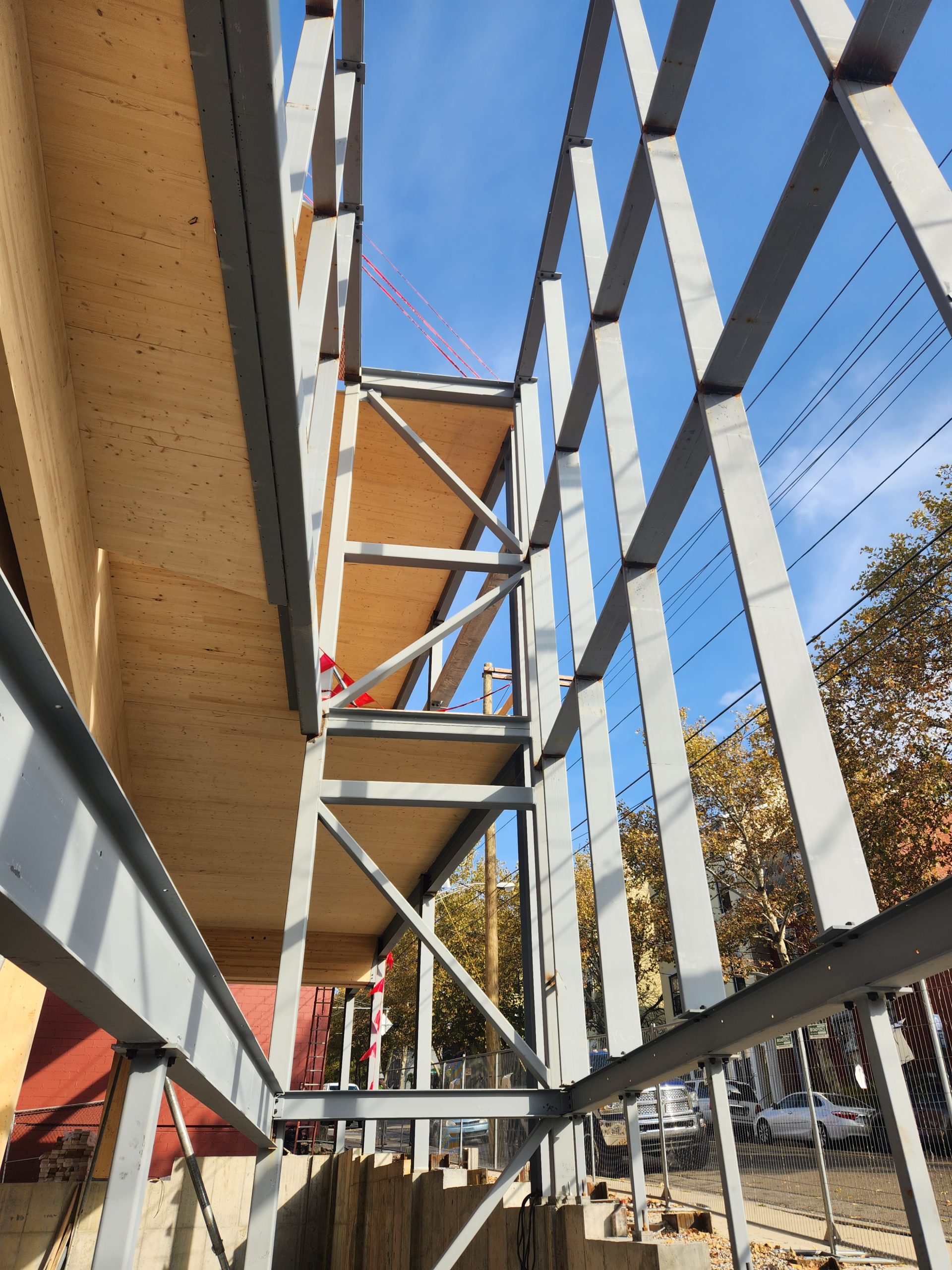Artificial intelligence (AI) is changing multiple industries everywhere, and structural engineering isn’t exempt.
Automating repetitive tasks like proposal writing or field reports are just a couple of examples of how AI could streamline the engineering design processes and change how structural engineers work.
But what do actual structural engineers think?
We surveyed Pinnacle Engineering’s structural engineers about this topic. We asked them questions about how they currently use AI in their jobs, what they think some risks are, and what potential limitations exist.
How could you see structural engineers Using AI technology currently or in the future?
The potential of AI for structural engineering aligns with other industries by streamlining repetitive tasks and improving communication efficiencies. Our team highlighted several applications of AI that could improve structural engineers’ daily routines, ranging from automating routine work to improving complex modeling processes.
Pinnacle Engineering Principal Tom noted:
“I could see AI being used to take recordings from site visits and turn them into field reports or investigation reports with much less time being involved.
The same would be true for creating meeting minutes from client meetings and even from conference presentations and trade show conversations.”
This use would allow engineers to focus on higher-value tasks.
Several engineers also noted using it for automating documentation and reports, like transcribing recordings from site visits into field reports or investigation summaries. Time spent on tedious but necessary tasks could be reduced.
Others pointed out the potential of AI-driven analytical tools for design and modeling. For example, AI software could inspect architectural models or drawings, apply engineering rules, and automatically generate structural models. These tools could also detect clashes between models from different design teams, flagging issues during the design process.
Our team already uses AI tools like Chat GPT to help proofread structural reports, proposals, and client communications.
Beyond writing tasks, future applications could include comparing documents to identify changes, running cost comparisons during the schematic design phase, and even automating code compliance checks.
AI has the potential for tasks requiring repetitive steps, like optimizing a building’s shear wall layout to reduce torsional irregularity in seismic conditions.
Using the engineer’s initial lateral model and defined seismic force calculation, AI could analyze wall stiffness distributions and recommend configurations to minimize torsion and avoid manual effort from engineers.
Pinnacle’s team noted that AI, specifically machine learning tools, could improve modeling capabilities by allowing dynamic analyses, optimizing beam sizes based on cost data, and performing more detailed wind analyses. These tools could offer faster and more precise designs. This would allow engineers to focus on the more specialized and critical aspects of their work.
The main theme among Pinnacle Engineering’s responses is that AI tools can help with repetitive tasks that aren’t specific to their expertise or involve their basic concepts. However, the value of these tools is still dependent on the engineers themselves, who must integrate and assess thoughtfully as experienced “real human” professionals.
What are some potential risks or outcomes of structural engineers relying solely on AI?
The overwhelming response from Pinnacle Engineering’s team about the potential risk of solely relying on AI can be summarized with Structural Engineer Abby’s survey response:
“A long-term risk I see is engineers losing their intuition (or never getting one). If you aren’t directly calculating the numbers, you aren’t going to get a good understanding of the structure you’re designing.
This could potentially lead to building collapse or other major issues if the designer doesn’t understand what they are looking at.”
Like most professions, the experience you get from time and dealing with challenges manually can’t be replicated by an AI reliance on critical thinking. “
The trust and reliance on AI outputs are unknown and have risks. Engineers may want to assume that AI-generated results are always correct, but this trust can lead to errors that affect building integrity and structure.
One team member wrote about the importance of having QC/QA protocols for AI similar to those required for work prepared by engineers. Without these protocols, the aspects of design codes that require manual assessment may be misinterpreted or overlooked, resulting in flawed designs. For instance, AI might handle situations that are true 99% of the time, but in rare scenarios, the inability to recognize exceptions could have serious consequences.
Integrating AI into the workflow also introduces risks of devaluing the profession. If the public or clients perceive structural engineering as something that can be done entirely with AI, it could diminish appreciation for engineers’ expertise and accountability. Additionally, AI could inadvertently harm firms’ reputations by making unintended promises or offering misleading information. One engineer recounted a story of a chatbot offering unauthorized discounts at a car dealership, illustrating how AI, without proper human oversight, can damage credibility and trust.
The team cautioned against the complacency that can arise when tools like AI automate processes. A parallel was drawn to the shift from AutoCAD to Revit, where less experienced operators could produce drawings that looked correct but often lacked the quality and accuracy of those created by seasoned professionals. A similar dynamic could emerge with AI, where outputs may appear correct but don’t meet the standards for safe and effective structural designs.
While AI offers substantial benefits, it cannot replace the critical thinking, accountability, and expertise engineers bring to their work.
What are some things AI just can’t do in structural engineering?
Despite its potential, there are several areas where AI falls short, specifically in structural engineering.
Our team highlighted aspects of the profession that rely on human judgment, creativity, and social skills. These are things that AI cannot replicate.
Principal and Founder of Pinnacle Engineering, Kip, shared his point of view:
“…AI is very good at taking known things and learning from them to produce work similar in style and function, but this is not the same as the creative structural engineering process.
When one of our clients wanted to move an existing building several miles, up and down hills, across rivers, on side roads and interstates, and under overpasses, at speeds up to 65 mph; we came up with a scheme to accomplish that task.
AI at this point, would struggle to come up with anything because there is very limited, if any, data for it to learn from when solving that problem. “
In-person, client interactions, and brainstorming can’t and won’t ever be able to be replaced by AI. Clients need engineers to answer questions thoughtfully, discuss options, and explore potential engineering solutions in real time. These interactions need technical expertise and learned social skills like empathy and relationship building.
Our team shares a similar sentiment for other job responsibilities for structural engineers, like site visits and construction administration tasks.
Structural engineers bring an experienced eye to site visits by evaluating actual building conditions and seeing issues that may not be apparent in digital models or data. Construction administration also requires hands-on oversight, collaboration with contractors, and adapting to building development challenges.
While AI can help with specific administrative tasks, such as drafting RFI responses or reviewing shop drawings, it can’t go to the actual building sites and assess the environment.
About Pinnacle Engineering
Pinnacle Engineering’s wide-ranging expertise and commitment to challenging the norm in structural engineering sets us apart. Our clients have been coming back since 1996 for a reason.
Our engineers specialize in commercial, custom residential, and specialized design projects.
If you’re interested in working with us, reach out here.


